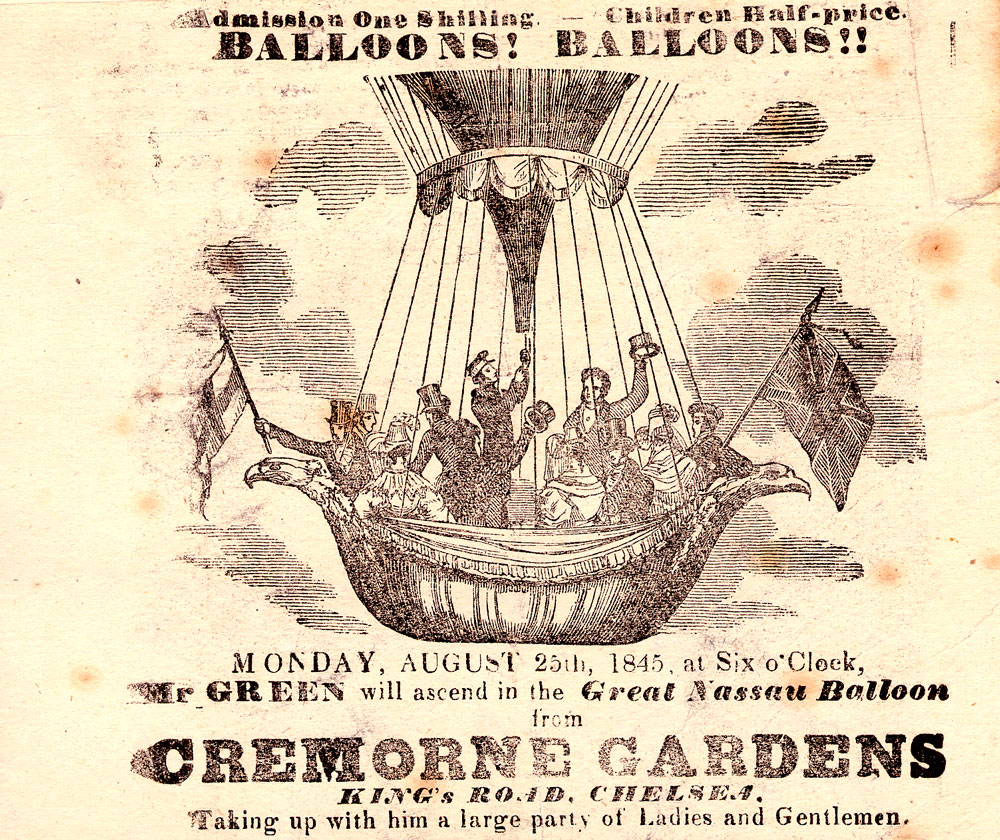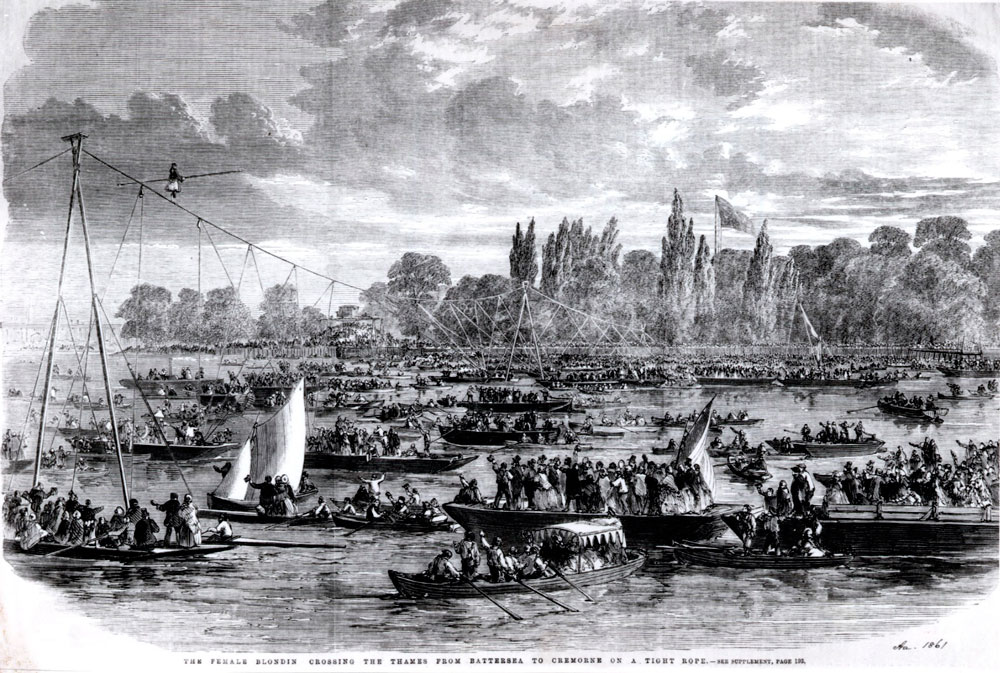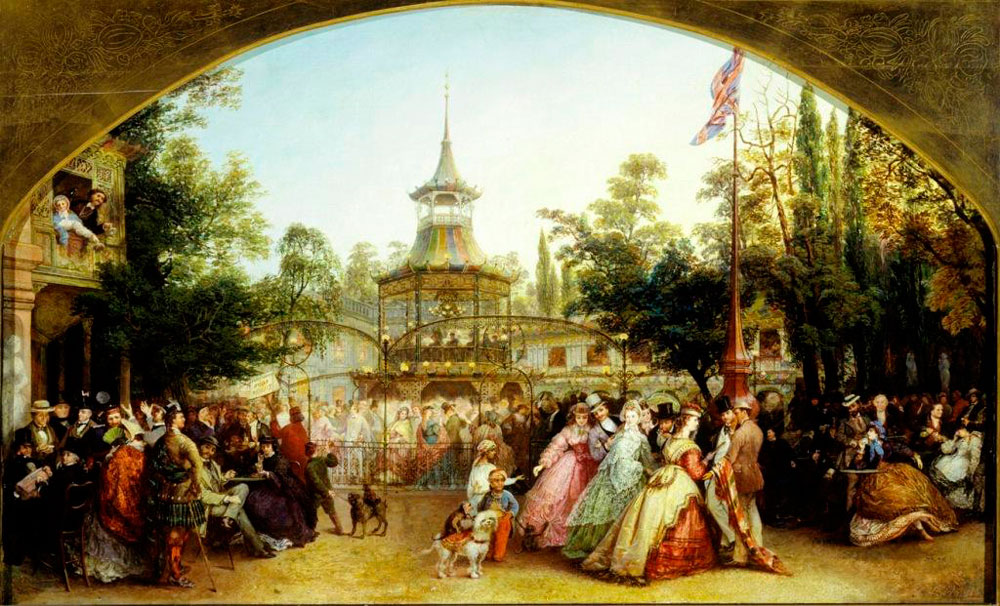The Dancing Platform at Cremorne Gardens by Phoebus Levin, 1862
In the mid-19th century Victorian Londoners flocked to Chelsea’s riverside to enjoy the wonderful – and sometimes dubious – delights of Cremorne Pleasure Gardens
Cremorne Gardens is a small Thames-side park near the former Lots Road power station. Today’s half-acre space is all that remains of an extraordinary – and by night infamous – 12-acre Victorian pleasure garden that was once described by an unhappy local as a ‘nursery of every kind of vice.’
In the early 1800s the grounds of Viscount Cremorne’s home, known as Chelsea Farm, extended from the Thames to the King’s Road. After the Irish peer died in 1813 the estate passed through several hands until it was acquired by Thomas Bartlett Simpson, a wealthy coffee house owner. In 1845 Simpson sub-let to James Ellis, and he developed the land as a place of entertainment and spectacle.
The Pleasure Gardens rapidly became a mecca for Londoners of all classes, with many visitors arriving at Cremorne Pier on the threepenny steamer from the City,. For an entrance fee of one shilling, visitors could swap the capital’s dingy, crowded streets for a manicured landscape of lawns, lakes and fountains.
The chief attraction for the crowds was the dazzling array of amusements on offer: these included a Crystal Grotto, a Marionette Theatre, a Hermit’s Cave, a Bowling Saloon, a theatre hosting ballet, burlesque and opera, a circus, flower shows, exhibitions and weekly fireworks displays. In addition to these regular attractions there were special set-piece events, such as the 1851 Naval Fête, during which a steamer was blown up in a mock battle.

One of the biggest draws were the frequent displays of hot air ballooning. The Montgolfier brothers came to London to fly over Chelsea and a pub named the Balloon Tavern was opened within the Gardens (the premises is now the Lots Road pub). Most bizarrely, in June 1874 Vincent de Groof, known as L’Homme Volant, jumped from a balloon at 500 ft in a bat-like contraption of ropes, pulleys and silk wings. His intention was to flap/glide down to earth; sadly, the theory didn’t work in practice and de Groof crashed onto Sydney Street and broke his neck.

The female Blondin crossing the Thames on a tightrope to Cremorne Gardens
While the conduct of daytime visitors caused few problems, once darkness fell it was a different story entirely. The Gardens attracted a disreputable audience, as this 1870 account records: ‘This is the maddest place in London after ten o’clock in the evening. Until that hour, the middle class of London citizens, shop-keepers, tradesmen, and clerks, and their wives and sweethearts have possession of the Gardens; but at that hour they leave the place, and from thence until one and two o’clock in the morning, Cremorne is in the possession of Lost Women and their male friends and abettors.’
Such behaviour inevitably lead to protests from Chelsea residents and, following a vigorous campaign, in 1877 the application for a renewed licence was refused and Cremorne Pleasure Gardens was closed. The site was subsequently sold for construction and, apart from the park, much of it is now covered by the World’s End estate.
There is just one other reminder of this area of Chelsea’s colourful past. The wrought-iron gates from the old Gardens were saved and re-instated at the entrance to the new park.
Illustrations reproduced by permission of Kensington and Chelsea Local Studies

